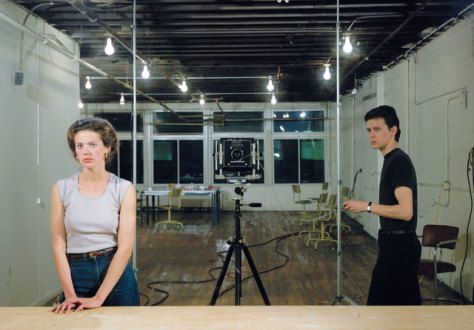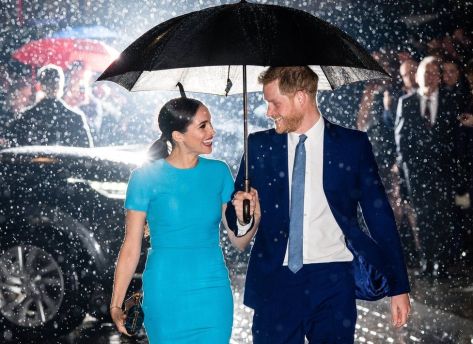“To gaze implies more than to look at – it signifies a psychological relationship of power, in which the gazer is superior to the object of the gaze.” Schroeder. J, in Barbara B Stern, Representing Consumers: Voices, Views and Visions (1998) London: Routledge. Pg 208.
The gaze is an important in the theory of photography. There are multiple ways of looking at what that actually means. A simple list that summarises it is:
- The photographer’s gaze
- What they are actually looking at and how they are looking, which might be though the lens of the camera – but could also be by looking at the image that they are planning (an example of this would be in the work of Gregory Crewdson).
- The viewer’s (spectator’s) gaze
- The male gaze is discussed in Berger’s Ways of Seeing (Berger, 1973) – ‘Men look at women. Women watch themselves being looked at’ – and usually implies power, ‘I own the image/object that is shown’. It was initially suggested in relation to film by Laura Mulvey in her essay Visual Pleasure and Narrative Cinema’ (Mulvey, 1975).
- The female gaze – initially discussed by feminists in response to Mulvey’s work and now widely used but not clearly defined. Is it about all work by females? Or only about that work with a feminist slant? There is an interesting recent article by Murray Brown that says, ‘if anything, the female gaze is simply an awareness that women do not hold half the power’ (Murray Brown, 2019).
- The LGBTQ+ gaze also needs to be considered and has more recently been explored, for instance in the context of the work of Mapplethorpe and Goldin.
- The ‘colonial gaze’ – about attitudes to ‘others’ (not white, European or American).
- The academics gaze – analysing the context, sources and details
- The gaze of the person/people within the image
- Where they are looking and who they are looking at- an example of multiple gazes within an image is Jeff Wall’s photograph Picture for Women (1979).

Picture for Women -© Jeff Wall
- Where they are looking and who they are looking at- an example of multiple gazes within an image is Jeff Wall’s photograph Picture for Women (1979).
- The bystander’s gaze
- People looking at people looking! Good examples of these are in Martin Parr’s recent work on Versaille where he has photographed people taking images of themselves (Pégard, 2019).
For a more complicated consideration of the gaze there is an essay by Lutz and Collins in ‘The photography reader’ (Wells, 2010, pp. 354-374) which starts by saying ‘the photograph……is not simply a captured view of the other, but rather a dynamic site at which many gazes or viewpoints intersect’. The essay is written in the context of research on National Geographic images. They discuss seven different types of gaze which I shall summarise here:
- The photographer’s gaze which controls the subject matter, the structure, view and content, and which may be emotionally distant (alienated) from the subject
- The magazines gaze (they were talking in the context of the National Geographic), but there would be similar issues from any commissioned image – where a specific image is chosen, and the layout will give a desired ‘reading’ to the image
- The magazine reader’s gazes where ‘the reader….is invited to dream in the ideological space of the photograph’ (Tagg, 1988), anything that jars may put the reader off interpreting the image as the magazine would want. It is reliant on cultural models, gender and diversity of experience together with the context of reading (a quick skim or detailed look, alone or with other people)
- The non-Western subject’s gaze (or more generally the gaze of the subject in the image) divided further into:
- Confronting the camera, acknowledging the photographer and the reader ‘I see you looking at me, so you cannot steal that look’ (p.359), what it means is dependant on the expression (smiling, glaring etc.), a collaboration and an attempt at creating intimacy. They note that those who the West defines as weak are more likely to look directly at the camera than those defined as strong – is that editorial choice/political reasons?
- Looking at something else within the frame – gives information about the subject of the image
- Looking into the distance – may suggest things about the personality of the subject (dreamy, forward thinking)
- No gaze visible, too small, covered with a mask – ‘a boundary erected’
- A direct Western gaze – in the context of the National Geographic included Westerners in the image may allow the viewer/reader more identification with the image. The meaning will then partially depend on how the various people within the image interact – ‘the mutuality or non-mutuality of the gaze of the two parties’ (p.362). Is the gaze colonial? Is it patronising? These types of images are less frequent now – is that because of a changing view of Americans within the world – the other becoming more threatening and therefore safer behind the camera?
- The refracted gaze of the Other: to see themselves as others see them – ‘mirror and camera are tools of self reflection and surveillance’ (p.365), creating a double, looking for self-knowledge. The photo may actually increase alienation, see Sontag’s suggestion ‘the photographer is a supertourist, an extension of the anthropologist……the photographer is always trying to colonise new experiences……to fight against boredom’ (Sontag, 1978).
- The academic spectator’s gaze as a subtype of the reader’s gaze which here looks at a critique of the images and why they were made
They summarise by saying that ‘the multiplicity of looks is at the root of a photo’s ambiguity, each gaze potentially suggesting a different way of viewing the scene’ (p.171).
In the OCA handbook for IAP it states:
A key feature of the gaze is that its subject remains unaware of the present viewer. Academics and theorists have identified a number of different gazes:
- the spectator’s gaze – the look of the viewer at a person in the image.
- the internal gaze – the gaze of one depicted person at another within the same image.
- the direct address – the gaze of a person depicted in the image looking out directly, as if at the viewer (through the camera lens).
- the look of the camera – the way the camera itself appears to look at people depicted in the image (the gaze of the photographer).
- the bystander’s gaze – the viewer being observed in the act of viewing.
- the averted gaze – the subject in the image deliberately looking away from the lens.
- the audience gaze – an image depicting the audience watching the subject within the image.
- the editorial gaze – the whole ‘institutional’ process by which a proportion of the photographer’s gaze is chosen and emphasised.
There is a comprehensive overview of the gaze and accompanying issues available at: http://visual-memory.co.uk/daniel/Documents/gaze/gaze12.html?LMCL=zhc8U6 . In this Daniel Chandler adds in discussion about the direction and angle of the gaze, proximity and how this is varied by race and custom (as is length of time someone will look at you and how direct the gaze will be). He also discusses the eye of the camera, although mostly related to film and TV and notes ‘Looking at someone using a camera (or looking at images thus produced) is clearly different from looking at the same person directly. Indeed, the camera frequently enables us to look at people whom we would never otherwise see at all. In a very literal sense, the camera turns the depicted person into an object, distancing viewer and viewed’ (Chandler, 1988).
This short discussion of different ways of considering the use of the word ‘gaze’ shows many alternative ways of interpreting it and its use within photography. While I was considering this, in the work-up for exercise 3.4 I came across a photo-essay on the BBC news site. https://www.bbc.co.uk/news/in-pictures-51767925
I do not usually follow the British royal family – but I thought that many of these images demonstrated the types of gazes listed above. In order:
- The spectator’s gaze
- The internal gaze
- The audience gaze
- The editorial gaze
- The look of the camera
- The bystander’s gaze
- The averted gaze
- The direct gaze
- The direct gaze
- The direct gaze
- The internal gaze
- The internal gaze

Meghan and Harry © Samir Hussein/Wireimage - The direct gaze and the averted gaze
- The direct gaze and the averted gaze
- The direct gaze

Meghan and Harry © Paul Edwards/Reuters - The bystander’s gaze
- The audience gaze
- The spectator’s gaze
References:
Barbara B Stern, Representing Consumers: Voices, Views and Visions (1998) London: Routledge. Pg 208.
Berger, J. (1973). Ways of Seeing. New York, Viking Press.
Chandler, Daniel (1998): ‘Notes on “The Gaze”‘ [WWW document] http://www.aber.ac.uk/media/Documents/gaze/gaze.html [Accessed 12 March, 2020]
Mulvey, L. (1975). Visual Pleasure and Narrative Cinema. Screen, 16(3), pp.6–18.
Murray Brown, G. (2019). Can a man ever truly adopt the ‘female gaze’? [online] http://www.ft.com. Available at: https://www.ft.com/content/4e29215a-0f40-11e9-a3aa-118c761d2745 [Accessed 9 Mar. 2020].
Pégard, C. (2019). Versailles, Visible invisible: Dove Allouche, Nan Goldin, Martin Parr, Eric Poitevin, Viviane Sassen : [exposition, Versailles, Château de Versailles, Domaine du Trianon, 14 mai-20 octobre 2019]. Paris: Éditions Dilecta, Dl.
Sontag, S. (1978). Susan Sontag on photography. London, Great Britain: Allen Lane.
Tagg, J. (1988). The Burden of Representation : Essays on Photographies and Histories. Basingstoke: Palgrave Macmillan.
Wells, L. (2010). The photography reader. Abingdon, Oxon ; New York, Ny: Routledge, pp.354–374.
